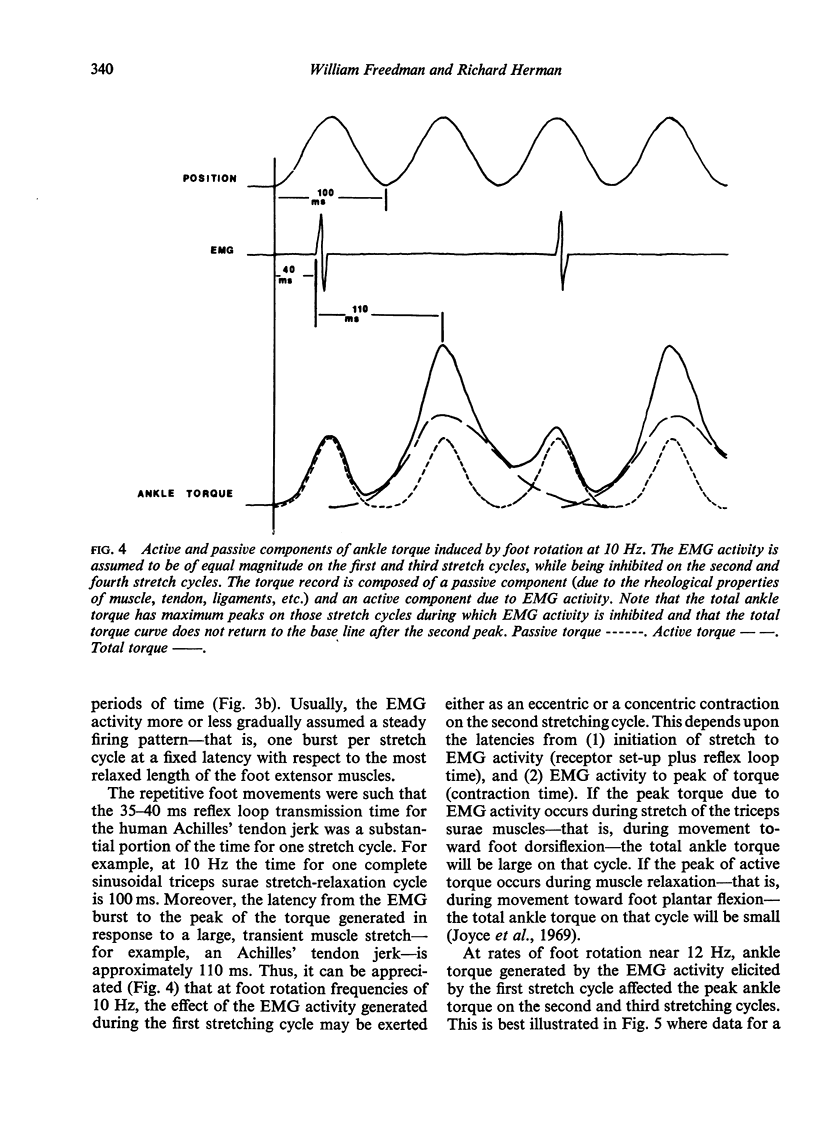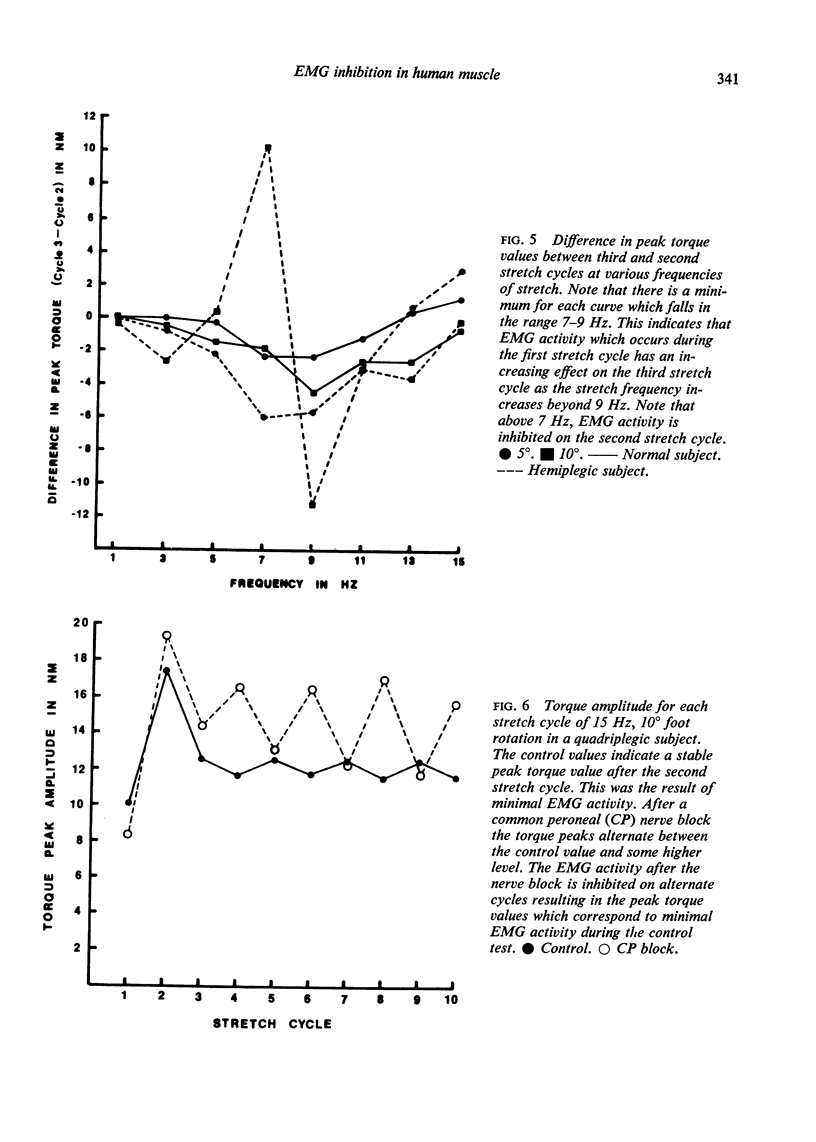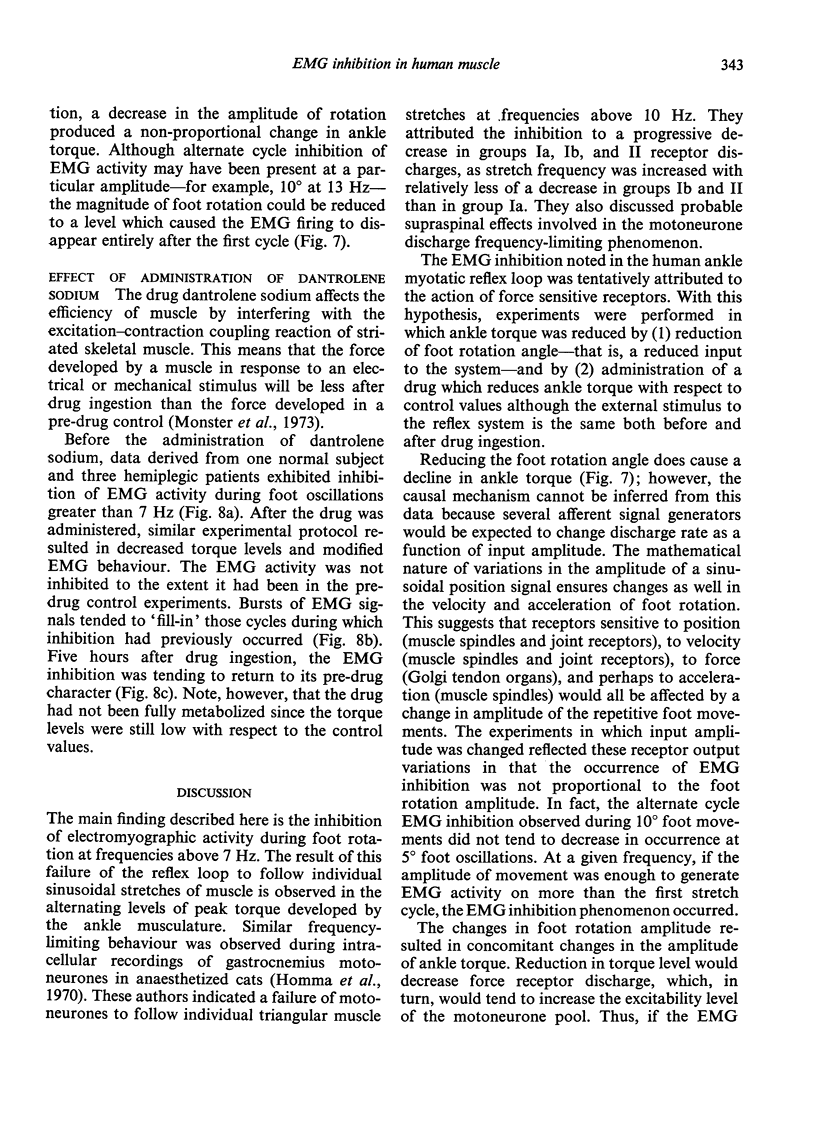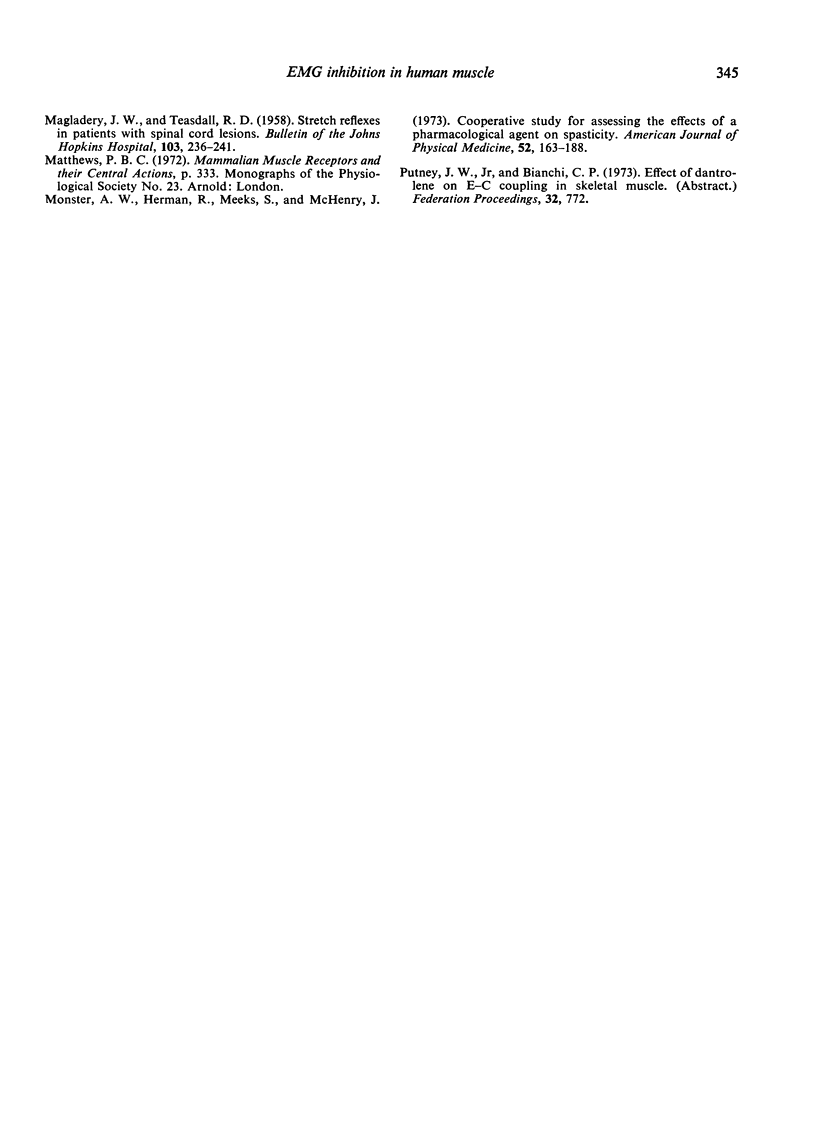Abstract
Torque and electromyographic (EMG) responses to sinusoidal rotations of the foot were measured. The frequency range of the movements was 0.5 Hz to 15 Hz at amplitudes ranging between 1 and 10 degrees. At frequencies above 7 Hz, the EMG activity did not follow individual foot rotation cycles. The EMG activity was inhibited whenever the peak torque was large with respect to the first cycle peak torque. Dantrolene sodium reduced the torque developed in triceps surae, allowing the EMG activity to follow individual stretch cycles. As the drug was metabolized, the EMG activity returned to the character seen in the pre-drug control--that is, inhibition on alternate stretch cycles. It is concluded that the EMG inhibition phenomenon can be attributed in part to force receptors in muscle but that these receptors are not the sole contributors to the inhibition.
Full text
PDF









Selected References
These references are in PubMed. This may not be the complete list of references from this article.
- Herman R., Mayer N., Mecomber S. A. Clinical pharmaco--physiology of dantrolene sodium. Am J Phys Med. 1972 Dec;51(6):296–311. [PubMed] [Google Scholar]
- Herman R. Relationship between the H reflex and the tendon jerk response. Electromyography. 1969 Nov-Dec;9(4):359–370. [PubMed] [Google Scholar]
- Homma S., Ishikawa K., Stuart D. G. Motoneuron responses to linearly rising muscle stretch. Am J Phys Med. 1970 Oct;49(5):290–306. [PubMed] [Google Scholar]
- Houk J., Henneman E. Responses of Golgi tendon organs to active contractions of the soleus muscle of the cat. J Neurophysiol. 1967 May;30(3):466–481. doi: 10.1152/jn.1967.30.3.466. [DOI] [PubMed] [Google Scholar]
- JANSEN J. K., RUDJORD T. ON THE SILENT PERIOD AND GOLGI TENDON ORGANS OF THE SOLEUS MUSCLE OF THE CAT. Acta Physiol Scand. 1964 Dec;62:364–379. doi: 10.1111/j.1748-1716.1964.tb10435.x. [DOI] [PubMed] [Google Scholar]
- Joyce G. C., Rack P. M., Westbury D. R. The mechanical properties of cat soleus muscle during controlled lengthening and shortening movements. J Physiol. 1969 Oct;204(2):461–474. doi: 10.1113/jphysiol.1969.sp008924. [DOI] [PMC free article] [PubMed] [Google Scholar]
- Lennerstrand G., Thoden U. Dynamic analysis of muscle spindle endings in the cat using length changes of different length-time relations. Acta Physiol Scand. 1968 May-Jun;73(1):234–250. doi: 10.1111/j.1748-1716.1968.tb04100.x. [DOI] [PubMed] [Google Scholar]
- MAGLADERY J. W., TEASDALL R. D. Stretch reflexes in patients with spinal cord lesions. Bull Johns Hopkins Hosp. 1958 Nov;103(5):236–241. [PubMed] [Google Scholar]


